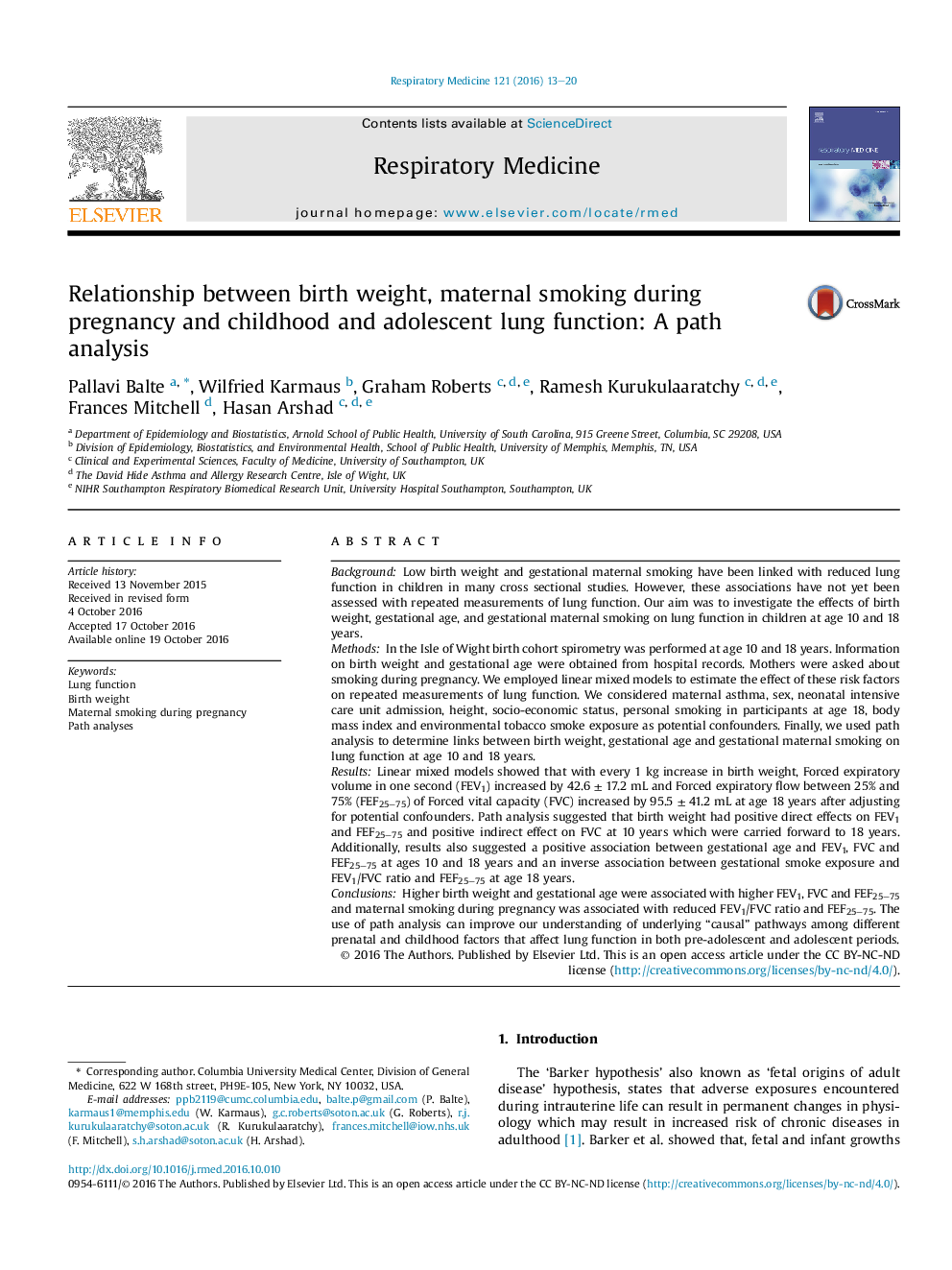| Article ID | Journal | Published Year | Pages | File Type |
|---|---|---|---|---|
| 5725023 | Respiratory Medicine | 2016 | 8 Pages |
â¢Path analysis to detect underlying “causal” pathways between prenatal and early childhood factors that affect lung function.â¢Birth weight and gestational age act as intervening variables in path analyses models with positive effects on lung function.â¢In-utero exposure to maternal smoking has adverse effects on lung function even in late adolescence.
BackgroundLow birth weight and gestational maternal smoking have been linked with reduced lung function in children in many cross sectional studies. However, these associations have not yet been assessed with repeated measurements of lung function. Our aim was to investigate the effects of birth weight, gestational age, and gestational maternal smoking on lung function in children at age 10 and 18 years.MethodsIn the Isle of Wight birth cohort spirometry was performed at age 10 and 18 years. Information on birth weight and gestational age were obtained from hospital records. Mothers were asked about smoking during pregnancy. We employed linear mixed models to estimate the effect of these risk factors on repeated measurements of lung function. We considered maternal asthma, sex, neonatal intensive care unit admission, height, socio-economic status, personal smoking in participants at age 18, body mass index and environmental tobacco smoke exposure as potential confounders. Finally, we used path analysis to determine links between birth weight, gestational age and gestational maternal smoking on lung function at age 10 and 18 years.ResultsLinear mixed models showed that with every 1 kg increase in birth weight, Forced expiratory volume in one second (FEV1) increased by 42.6 ± 17.2 mL and Forced expiratory flow between 25% and 75% (FEF25-75) of Forced vital capacity (FVC) increased by 95.5 ± 41.2 mL at age 18 years after adjusting for potential confounders. Path analysis suggested that birth weight had positive direct effects on FEV1 and FEF25-75 and positive indirect effect on FVC at 10 years which were carried forward to 18 years. Additionally, results also suggested a positive association between gestational age and FEV1, FVC and FEF25-75 at ages 10 and 18 years and an inverse association between gestational smoke exposure and FEV1/FVC ratio and FEF25-75 at age 18 years.ConclusionsHigher birth weight and gestational age were associated with higher FEV1, FVC and FEF25-75 and maternal smoking during pregnancy was associated with reduced FEV1/FVC ratio and FEF25-75. The use of path analysis can improve our understanding of underlying “causal” pathways among different prenatal and childhood factors that affect lung function in both pre-adolescent and adolescent periods.
